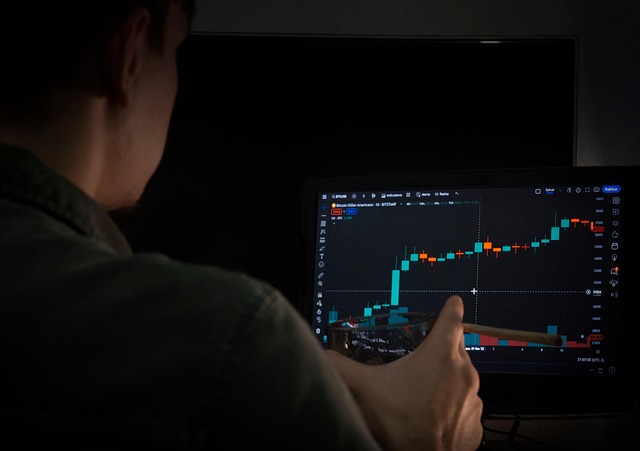Difference Between Bitcoin and Altcoin: An In-Depth Analysis
Author: Jameson Richman Expert
Published On: 2025-08-28
Prepared by Jameson Richman and our team of experts with over a decade of experience in cryptocurrency and digital asset analysis. Learn more about us.
Understanding the nuanced differences between bitcoin and altcoin is essential for anyone looking to navigate the complex landscape of cryptocurrencies. As the digital currency ecosystem rapidly expands—now comprising thousands of varied tokens—investors, developers, and enthusiasts often grapple with distinguishing foundational concepts from innovative variants. While bitcoin (BTC) remains the pioneering cryptocurrency and a symbol of the digital gold standard, altcoins encompass the broader universe of alternative coins that have emerged post-bitcoin, each with distinctive features, technological underpinnings, and use cases. This comprehensive guide aims to dissect these differences, explore their similarities, and highlight their significance in shaping the future of digital finance.

What is Bitcoin?
Bitcoin (BTC), introduced in 2009 by an anonymous entity known as Satoshi Nakamoto, revolutionized the financial landscape by creating the first decentralized digital currency. Built on blockchain technology—a distributed ledger system—bitcoin facilitates peer-to-peer transactions without reliance on centralized authorities like banks or governments. Its core design principles emphasize security, transparency, immutability, and censorship resistance, making it a robust store of value and medium of exchange.
Bitcoin’s architecture employs a proof-of-work (PoW) consensus mechanism, requiring miners to solve complex cryptographic puzzles to validate transactions and add new blocks to the blockchain. This process not only secures the network but also introduces new bitcoins into circulation at a predictable rate, with a hard cap of 21 million coins that enforces scarcity—a fundamental principle driving much of bitcoin's value proposition. Its decentralized nature, combined with the limited supply, has earned bitcoin widespread recognition as a hedge against inflation, often referred to as digital gold.
Beyond its technical attributes, bitcoin's social and economic impact is profound. It has fostered a global movement emphasizing financial sovereignty, privacy, and resistance to censorship. Institutions are increasingly integrating bitcoin into their treasury reserves, and it has become a focal point for macroeconomic debates about inflation hedging and monetary policy. As highlighted in analyses such as the geographical and regulatory foundations of exchanges like Bybit, bitcoin’s decentralized architecture significantly contributes to its resilience and broad acceptance across diverse jurisdictions.
What Are Altcoins?
Altcoins, a contraction of "alternative coins," encompass any cryptocurrency other than bitcoin. Since bitcoin's emergence, the crypto community has embarked on an extensive experiment in blockchain innovation, resulting in the proliferation of thousands of altcoins. Each altcoin typically aims to introduce improvements, novel functionalities, or address specific limitations observed in bitcoin's ecosystem. Notable examples include Ethereum (ETH), Ripple (XRP), Litecoin (LTC), and Cardano (ADA). These coins often serve highly specialized purposes, ranging from enabling smart contracts and decentralized applications to facilitating fast, low-cost transactions, or enhancing privacy protections.
For instance, Ethereum pioneered the concept of smart contracts—self-executing contracts with terms directly written into code—thus expanding blockchain utility far beyond simple value transfer. This innovation laid the groundwork for decentralized finance (DeFi), non-fungible tokens (NFTs), and a broad range of decentralized applications (dApps). Other altcoins have focused on improving scalability (e.g., Solana, Algorand), offering privacy enhancements (e.g., Monero, Zcash), or enabling interoperability between different blockchain networks (e.g., Polkadot, Cosmos). The diversity within the altcoin universe reflects ongoing technological experimentation and adaptation, aiming to solve specific issues or expand blockchain utility. A deeper dive into these innovations can be found in this detailed article.
Major Differences Between Bitcoin and Altcoins
1. Origin and Development Philosophy
Bitcoin was the first cryptocurrency, developed primarily to establish a peer-to-peer electronic cash system that operates independently of centralized authorities. Its creation was motivated by the desire for financial sovereignty, censorship resistance, and a trustless monetary system. Bitcoin embodies the philosophy of decentralization, transparency, and scarcity—aiming to provide a stable store of value and medium of exchange resistant to inflationary pressures.
Altcoins, however, often emerge as derivatives or improvements upon bitcoin’s foundational technology. They are typically created by diverse development teams with varying goals—ranging from scalability and privacy to specific use-case applications. Many altcoins are forks of bitcoin’s open-source codebase, modified to introduce new features, optimize performance, or experiment with consensus mechanisms. For example, Litecoin was created as a "lighter" version of bitcoin, with faster transaction confirmation times. These divergences reflect differing philosophical approaches—some prioritizing security and decentralization, others emphasizing innovation, energy efficiency, or niche functionalities.
2. Market Capitalization, Liquidity, and Adoption
Bitcoin dominates the market with the largest market capitalization—comprising over 60% of the total crypto market value as of 2023—and enjoys the widest acceptance among institutions, retail investors, and payment processors. Its high liquidity and trading volume contribute to relatively stable price movements and ease of entry for new investors. Institutional adoption is evidenced by futures contracts, ETFs, and large-scale treasury allocations, further cementing its status as a mainstream asset.
In contrast, most altcoins have smaller market caps, which can lead to higher volatility, less liquidity, and increased risk. Nevertheless, some altcoins like Ethereum, Binance Coin (BNB), and Solana (SOL) have achieved significant market presence, fostering extensive ecosystems of decentralized applications, DeFi protocols, and enterprise integrations. Their active developer communities and broader utility promote a belief in their long-term viability, though they remain more susceptible to market sentiment and technological risks.
3. Use Cases, Functionalities, and Ecosystem Roles
Bitcoin is primarily regarded as a store of value—"digital gold"—and a hedge against macroeconomic instability. Its limited supply and security features make it suitable for long-term wealth preservation. Altcoins, however, serve a broad spectrum of roles: Ripple (XRP) facilitates cross-border payments with rapid settlement times; Cardano (ADA) emphasizes sustainability and scalability via proof-of-stake; Ethereum enables smart contracts and decentralized applications, catalyzing the explosion of DeFi, NFTs, and enterprise blockchain solutions. Privacy-focused coins like Zcash and Monero offer enhanced confidentiality, while interoperability projects like Polkadot and Cosmos aim to connect disparate blockchain ecosystems.
Each ecosystem’s unique functionalities reflect a broader trend of specialization, aiming to solve specific industry problems or unlock new digital economies. The diversity of use cases underscores the adaptability and continuous innovation within the crypto space, which extends well beyond simple value transfer.
4. Technological Infrastructure and Consensus Mechanisms
Bitcoin relies solely on proof-of-work (PoW), which, while considered highly secure, is energy-intensive and has environmental implications. Many altcoins adopt or develop alternative consensus protocols such as proof-of-stake (PoS), delegated proof-of-stake (DPoS), or hybrid systems. These aim to increase scalability, reduce energy consumption, and democratize network participation.
Ethereum’s transition to Ethereum 2.0 exemplifies this shift, moving from PoW to PoS to improve scalability and sustainability. Privacy coins like Monero employ advanced cryptographic techniques (e.g., ring signatures, stealth addresses) to enhance transaction confidentiality. Cross-chain interoperability projects such as Polkadot and Cosmos enable multiple blockchains to communicate and share data seamlessly, fostering a more interconnected and versatile ecosystem. These technological evolutions are vital to address scalability, security, and usability challenges inherent in blockchain networks.
5. Supply Models, Scarcity, and Economic Incentives
Bitcoin’s fixed supply cap of 21 million coins is a cornerstone of its value proposition, fostering scarcity and long-term appreciation potential. Many altcoins have varying supply models: some have capped supplies, others are inflationary or employ deflationary mechanisms. For instance, Ethereum’s issuance includes staking rewards and potential token burns (e.g., EIP-1559), influencing its supply dynamics.
The economic incentives embedded within each protocol—such as mining rewards, staking rewards, or token burns—affect supply and perceived scarcity. These factors influence investor sentiment, long-term value expectations, and network security. Understanding each asset’s supply model is crucial for assessing its inflationary/deflationary nature and potential for sustained growth.

Investing in Bitcoin and Altcoins
For investors, diversification remains a prudent strategy to manage risk while leveraging the growth potential of various blockchain projects. Bitcoin’s dominance offers stability, liquidity, and broad recognition, making it a foundational asset in any portfolio. Altcoins, with their varied functionalities and innovative features, provide opportunities for higher returns but come with increased volatility and risk.
Thorough assessment of each asset’s technological fundamentals, development community strength, adoption trajectory, and regulatory landscape is essential. Leading trading platforms like Binance, MEXC, Bitget, and Bybit offer comprehensive trading environments, research tools, and educational resources. Staying informed about technological developments, regulatory changes, and market sentiments is critical, especially given the high volatility and evolving legal frameworks surrounding crypto assets.
Risks, Challenges, and Considerations
Despite their promise, investments in bitcoin and altcoins carry substantial risks. Market volatility can lead to rapid, unpredictable price swings, risking significant losses. Regulatory actions—such as bans, restrictions, or taxation—can impact usability and valuation, with jurisdictions like China and India historically imposing restrictive measures. Security concerns are paramount; exchanges, wallets, and smart contracts are vulnerable to hacking, scams, and vulnerabilities, necessitating robust security practices and reputable platforms.
It’s vital for investors to stay informed about legal and regulatory developments. For example, this article on copy trading legality in Canada provides insights into compliance issues, while Bybit’s regulatory overview emphasizes understanding jurisdictional differences and adhering to local laws.
Conclusion
Distinguishing between bitcoin and altcoins is fundamental for effective participation in the cryptocurrency markets. Bitcoin’s role as a decentralized store of value offers stability and trust, while altcoins drive innovation through diverse functionalities, technological advancements, and niche applications. Recognizing the technological, economic, and regulatory factors shaping each asset helps investors and enthusiasts develop informed strategies. As the blockchain industry continues its rapid evolution, leveraging comprehensive resources—such as this detailed guide—can help you stay ahead, make smarter investment decisions, and capitalize on emerging opportunities with confidence.